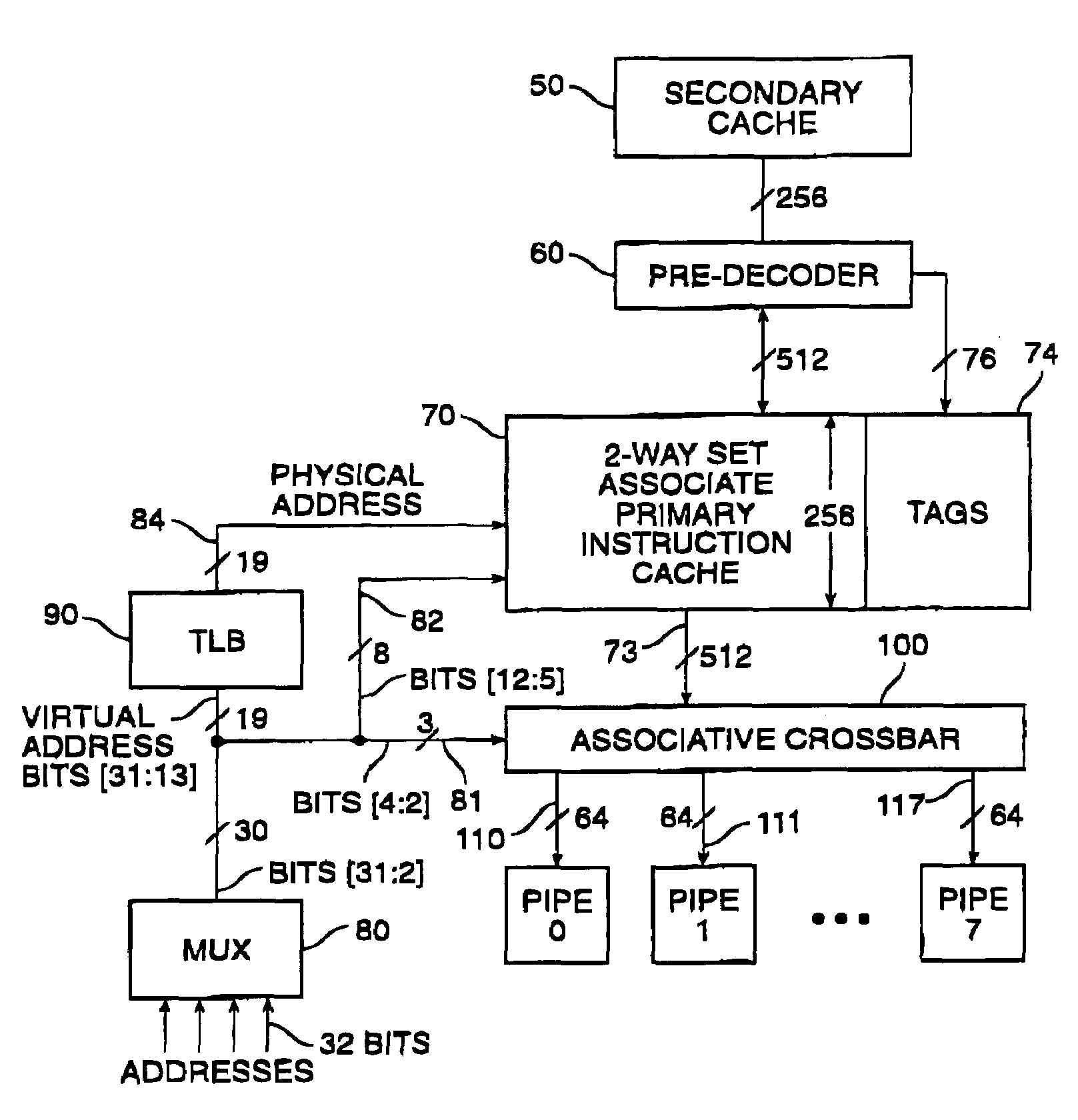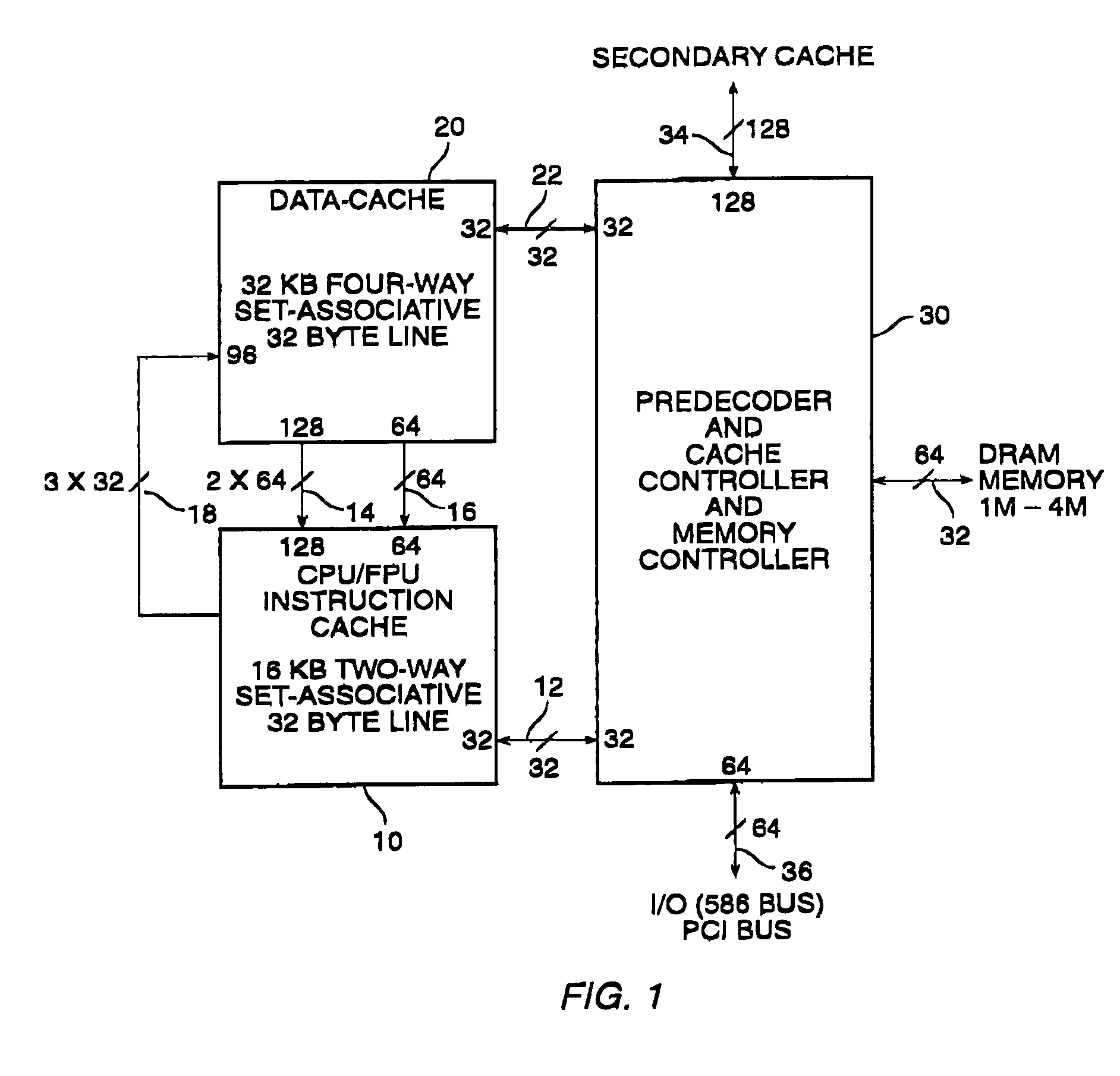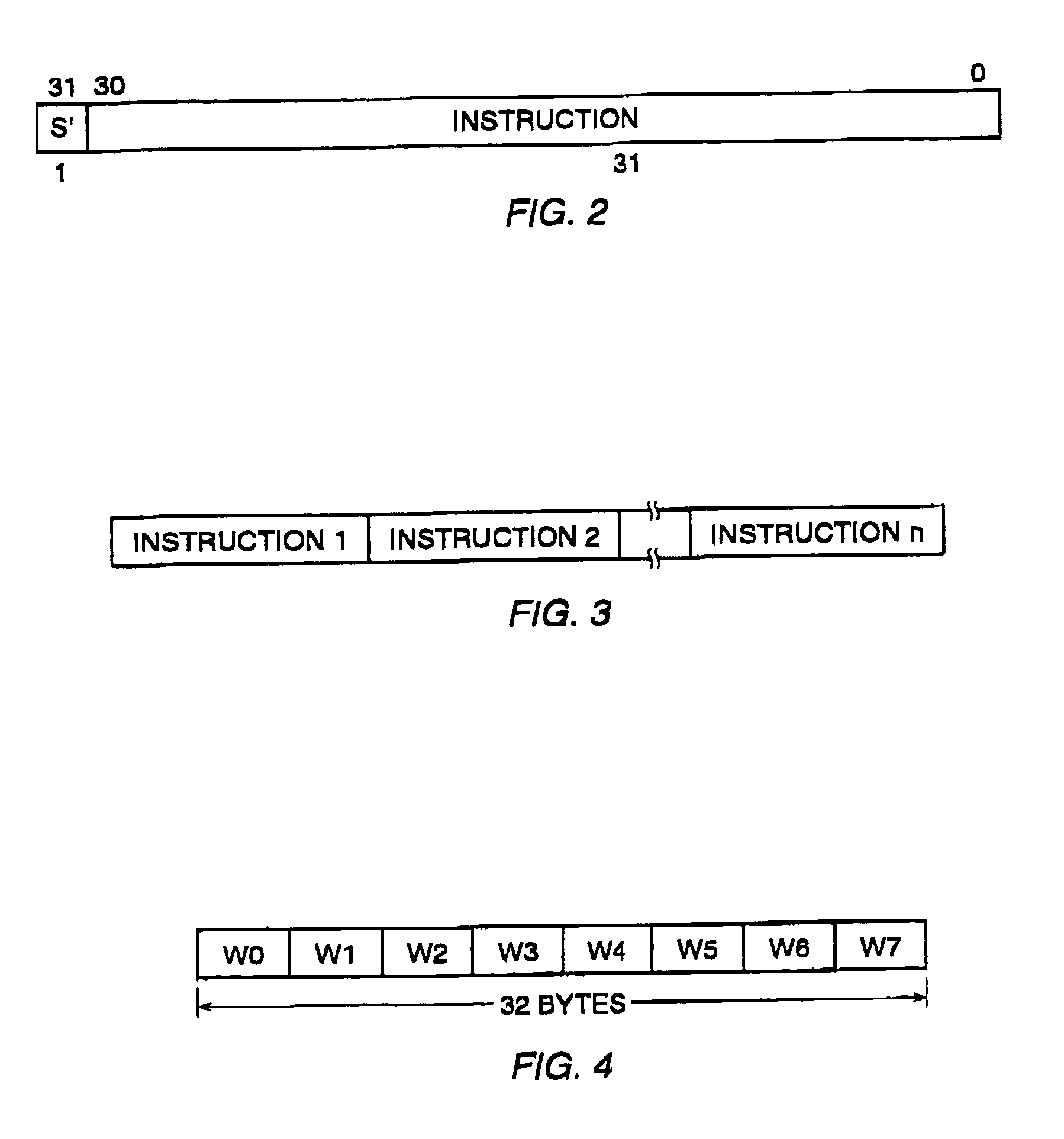Instruction cache association crossbar switch
a crossbar switch and instruction technology, applied in the direction of digital computers, instruments, computing, etc., can solve the problems of reducing the switching voltage of the instruction execution rate, requiring extra surface area, and slowing the system speed, so as to reduce the switching voltage, simplify the circuitry, and reduce the power
- Summary
- Abstract
- Description
- Claims
- Application Information
AI Technical Summary
Benefits of technology
Problems solved by technology
Method used
Image
Examples
Embodiment Construction
[0044]FIG. 1 is a block diagram of a computer system incorporating the associative crossbar switch according to the preferred embodiment of this invention. The following briefly describes the overall preferred system environment within which the crossbar is incorporated. For additional information about the system, see copending U.S. patent application Ser. No. 08 / 147,800, filed Nov. 5, 1993, and entitled “Software Scheduled Superscaler Computer Architecture,” which is incorporated by reference herein. FIG. 1 illustrates the organization of the integrated circuit chips by which the computing system is formed. As depicted, the system includes a first integrated circuit 10 that includes a central processing unit, a floating point unit, and an instruction cache.
[0045]In the preferred embodiment the instruction cache is a 16 kilobyte two-way set-associative 32 byte line cache. A set associative cache is one in which the lines (or blocks) can be placed only in a restricted set of locatio...
PUM
 Login to View More
Login to View More Abstract
Description
Claims
Application Information
 Login to View More
Login to View More - R&D
- Intellectual Property
- Life Sciences
- Materials
- Tech Scout
- Unparalleled Data Quality
- Higher Quality Content
- 60% Fewer Hallucinations
Browse by: Latest US Patents, China's latest patents, Technical Efficacy Thesaurus, Application Domain, Technology Topic, Popular Technical Reports.
© 2025 PatSnap. All rights reserved.Legal|Privacy policy|Modern Slavery Act Transparency Statement|Sitemap|About US| Contact US: help@patsnap.com



